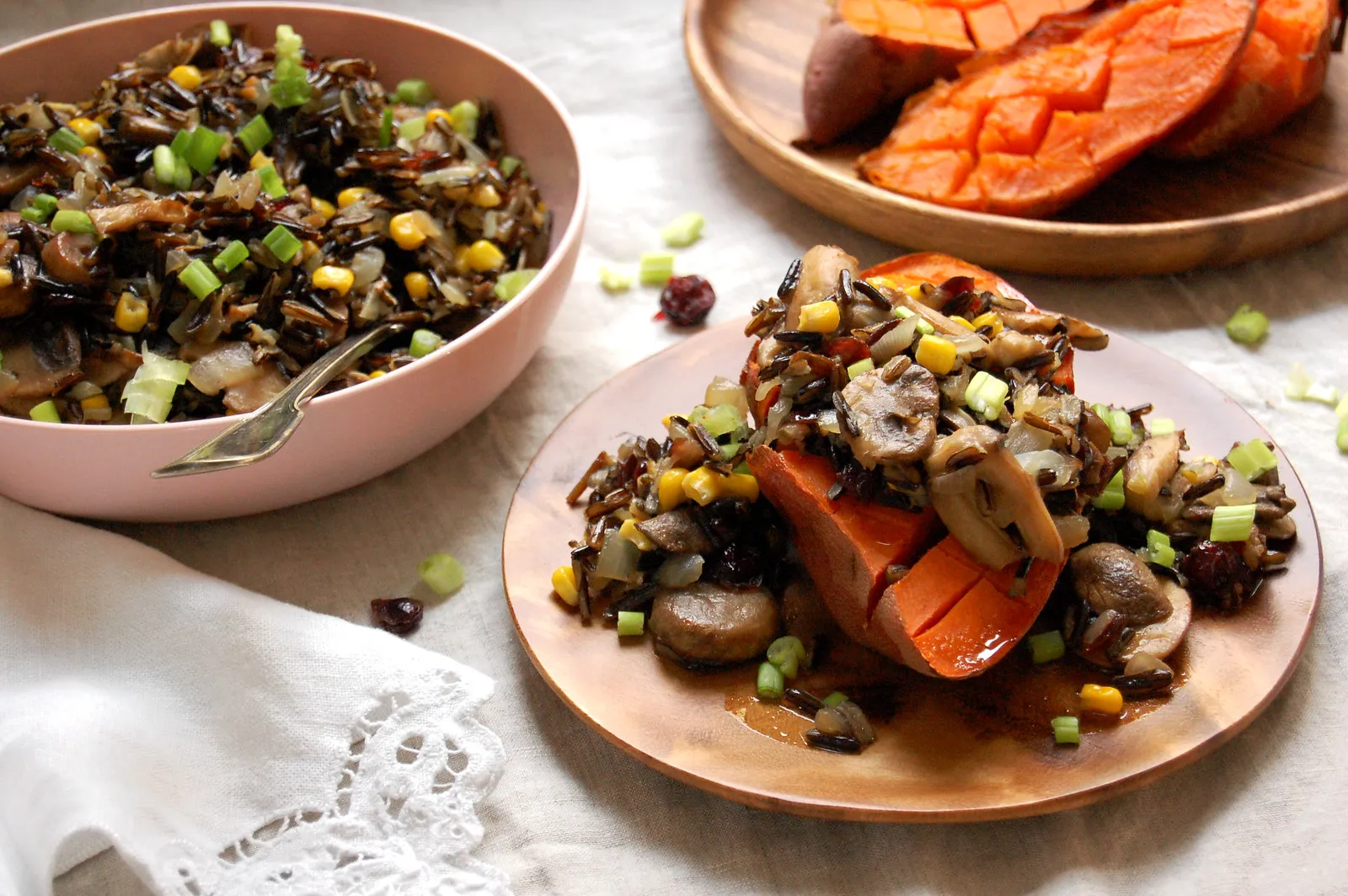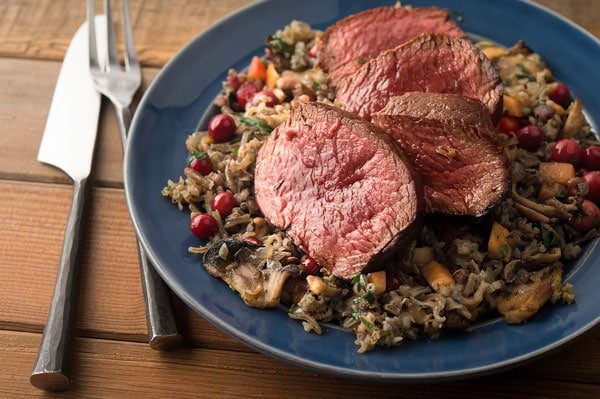
A Taste of Tradition: Authentic Native American Venison and Wild Rice Chili
The vast landscapes of North America have long been a source of sustenance and cultural identity for its Indigenous peoples. For millennia, hunters have respectfully harvested game, and foraged for wild edibles, transforming these gifts of the land into nourishing and flavorful meals. Among these culinary traditions, chili holds a special place, evolving over time and incorporating ingredients unique to specific regions and tribes. This article delves into the heart of an authentic Native American venison and wild rice chili, a dish that embodies the spirit of the land, the ingenuity of its first stewards, and a rich tapestry of flavors.
More Than Just a Meal: A Culinary Heritage
Native American cuisine is not merely about sustenance; it’s a profound connection to the earth, a celebration of seasonal bounty, and a way of passing down knowledge and stories through generations. The ingredients used in these traditional dishes often reflect the ancestral territories of different tribes. Venison, sourced from the deer that roamed freely across plains and forests, has been a staple protein for countless Indigenous communities. Wild rice, a grain native to North America, particularly the Great Lakes region, is another cornerstone ingredient, cherished for its unique nutty flavor, chewy texture, and its vital role in the ecosystem and the diets of both humans and wildlife.

Chili, as we understand it today, is a relatively modern dish that has been influenced by various culinary traditions. However, the concept of simmering meat and vegetables with spices to create a hearty stew or soup is ancient and can be found in many Indigenous cultures. When we speak of an "authentic Native American" chili, we are often referring to recipes that prioritize traditional ingredients, preparation methods that honor the bounty of the land, and a flavor profile that resonates with the culinary heritage of Indigenous peoples.
The Pillars of Our Chili: Venison and Wild Rice
-
Venison: The star of our chili is, of course, venison. This lean, flavorful meat offers a depth of taste that is distinct from beef or other common chili proteins. When properly prepared, venison is incredibly tender and absorbs the flavors of the spices and aromatics beautifully. In traditional Native American cooking, venison might have been dried, smoked, or stewed for extended periods to tenderize it. For this recipe, we’ll focus on a method that ensures a succulent and flavorful outcome.
-
Wild Rice: Wild rice, often referred to as "manomin" or "the food that grows on water," is a treasure of North America. Its cultivation is intertwined with the history and culture of tribes like the Ojibwe, Ho-Chunk, and Menominee. Unlike cultivated rice, wild rice is harvested from its natural aquatic habitat, a process that is labor-intensive and deeply connected to the natural rhythms of the seasons. Its distinctive dark, elongated grains and earthy, nutty flavor add a complex layer to the chili, setting it apart from more common rice varieties.

Crafting the Flavor Profile: Beyond the Ordinary
While chili often conjures images of tomatoes and beans, an authentic Native American approach might emphasize different flavor foundations. This recipe leans into the natural sweetness of vegetables, the savory depth of the venison, and the aromatic warmth of indigenous spices and herbs.
-
Aromatic Base: We begin with a foundation of finely diced onions and bell peppers. These provide a sweet and slightly pungent base. For a touch of smokiness, chipotle peppers in adobo sauce are a welcome addition, offering a gentle heat and a complex, smoky undertone that complements the venison.
-
Spices and Herbs: The spice blend is crucial. We move beyond just chili powder to incorporate the earthy notes of cumin, the subtle warmth of coriander, and a touch of smoked paprika to enhance the overall smoky character. A pinch of cayenne pepper can be adjusted for desired heat. For herbaceousness, dried oregano is a classic choice, while a bay leaf simmered in the broth adds a subtle, aromatic depth.
-
Liquid Gold: A rich venison or beef broth forms the liquid base, allowing the flavors to meld and deepen. A splash of good quality dark beer can also add another layer of complexity and a touch of malty sweetness.
-
The Sweetness of the Land: To balance the savory and spicy elements, we incorporate naturally sweet ingredients. Corn, whether fresh off the cob or frozen, adds a delightful sweetness and textural contrast. Diced sweet potatoes or butternut squash, when simmered, break down slightly, contributing a creamy sweetness and thickening the chili.
-
Umami Boost: A touch of tomato paste, used sparingly, adds a concentrated depth of flavor without making the chili overtly tomato-forward. This approach respects the natural sweetness and savory notes of the other ingredients.
The Art of Preparation: Patience and Respect
The key to an exceptional venison and wild rice chili lies in patience and proper preparation.
-
Searing the Venison: Browning the venison in batches is essential to develop a rich, caramelized crust. This not only adds flavor but also helps to tenderize the meat during the simmering process.
-
Building the Flavor: Sautéing the aromatics and spices until fragrant releases their essential oils, creating a more robust flavor base.
-
Slow Simmering: This is where the magic happens. Allowing the chili to simmer gently for an extended period enables the venison to become incredibly tender and the flavors to meld into a harmonious symphony. The wild rice will absorb the flavorful broth, becoming plump and delicious.
-
Resting: Like many stews, this chili benefits from a period of rest after cooking. This allows the flavors to deepen and the chili to thicken slightly.
Serving Suggestions: A Feast for the Senses
An authentic Native American venison and wild rice chili is best enjoyed with simple, yet flavorful accompaniments that complement its rich character.
- Fresh Herbs: A generous scattering of fresh cilantro or parsley adds a burst of freshness and color.
- Tangy Toppings: A dollop of plain yogurt or sour cream can provide a cooling counterpoint to the warmth of the chili.
- Crunch and Zest: A squeeze of fresh lime juice adds a bright, citrusy note that cuts through the richness.
- Cornbread: A warm, slightly sweet cornbread is a classic pairing, perfect for sopping up every last drop of the delicious chili.
- Additional Vegetables: Some may enjoy a side of roasted root vegetables, further embracing the bounty of the earth.
A Dish with a Story
This venison and wild rice chili is more than just a recipe; it’s an invitation to connect with a rich culinary heritage. It’s a dish that speaks of the land, the seasons, and the enduring traditions of Native American peoples. By preparing and savoring this meal, we can gain a deeper appreciation for the ingenuity, resourcefulness, and profound connection to nature that has sustained Indigenous communities for centuries. It’s a taste of tradition, a journey into the heart of authentic flavors, and a reminder of the enduring power of food to tell stories and bring people together.
Authentic Native American Venison and Wild Rice Chili Recipe
This recipe aims to capture the essence of a traditional Native American approach, focusing on wholesome ingredients and deep, earthy flavors. Adjust spice levels to your preference.
Yields: 6-8 servings
Prep time: 30 minutes
Cook time: 2.5 – 3 hours
Ingredients:
- 2 lbs venison, cut into ½-inch cubes (shoulder or stew meat works well)
- 2 tablespoons olive oil or rendered animal fat
- 2 large yellow onions, finely chopped
- 2 large bell peppers (any color), finely chopped
- 4 cloves garlic, minced
- 2 chipotle peppers in adobo sauce, minced (plus 1-2 tablespoons of adobo sauce, adjust to taste)
- 2 tablespoons chili powder (a good quality blend)
- 1 tablespoon ground cumin
- 1 teaspoon ground coriander
- 1 teaspoon smoked paprika
- ½ teaspoon dried oregano
- ¼ teaspoon cayenne pepper (or more, to taste)
- 1 bay leaf
- 1 (6-ounce) can tomato paste
- 6 cups venison or beef broth
- 1 cup dark beer (optional, but recommended for depth)
- 1 ½ cups cooked wild rice (see instructions below for cooking)
- 2 cups fresh or frozen corn kernels
- 1 large sweet potato or small butternut squash (about 1.5 lbs), peeled and cut into ½-inch cubes
- Salt and freshly ground black pepper to taste
Optional Garnishes:
- Fresh cilantro, chopped
- Plain yogurt or sour cream
- Fresh lime wedges
- Diced red onion
- Avocado, diced
Instructions:
1. Cook the Wild Rice:
- Rinse 1 cup of wild rice thoroughly under cold water.
- In a medium saucepan, combine the rinsed wild rice with 3 cups of water or broth.
- Bring to a boil, then reduce heat to low, cover, and simmer for 45-60 minutes, or until the rice is tender and has "split" open.
- Drain any excess liquid and set aside. You will need 1 ½ cups of cooked wild rice for the chili. (Leftover wild rice can be stored in the refrigerator for other uses).
2. Brown the Venison:
- Pat the venison cubes dry with paper towels. Season generously with salt and pepper.
- Heat 1 tablespoon of olive oil or fat in a large Dutch oven or heavy-bottomed pot over medium-high heat.
- Working in batches, sear the venison on all sides until deeply browned. Do not overcrowd the pot, as this will steam the meat instead of searing it.
- Remove the browned venison to a plate and set aside.
3. Sauté Aromatics and Spices:
- Add the remaining 1 tablespoon of olive oil or fat to the same pot. Reduce heat to medium.
- Add the chopped onions and bell peppers. Cook, stirring occasionally, until softened, about 8-10 minutes.
- Add the minced garlic and cook for another minute until fragrant.
- Stir in the minced chipotle peppers and adobo sauce, chili powder, cumin, coriander, smoked paprika, oregano, and cayenne pepper. Cook, stirring constantly, for 1-2 minutes until the spices are fragrant.
4. Deglaze and Build the Base:
- Stir in the tomato paste and cook for 1 minute, stirring to coat the vegetables.
- If using, pour in the dark beer and scrape the bottom of the pot to loosen any browned bits. Let it simmer and reduce slightly for 2-3 minutes.
- Return the browned venison (and any accumulated juices) to the pot.
- Pour in the venison or beef broth and add the bay leaf. Stir to combine.
5. Simmer the Chili:
- Bring the chili to a gentle simmer. Once simmering, reduce the heat to low, cover the pot, and cook for at least 1.5 hours, stirring occasionally. This allows the venison to begin to tenderize.
6. Add Sweetness and Wild Rice:
- Add the cubed sweet potato or butternut squash and the corn kernels to the pot.
- Continue to simmer, covered, for another 45-60 minutes, or until the vegetables are tender and the venison is very tender. The sweet potato or squash should have softened and slightly broken down, helping to thicken the chili.
7. Finish and Season:
- Stir in the cooked wild rice.
- Simmer for another 15-20 minutes, uncovered, allowing the flavors to meld and the chili to thicken to your desired consistency.
- Remove and discard the bay leaf.
- Taste and season generously with salt and freshly ground black pepper. Adjust cayenne pepper if more heat is desired.
8. Rest and Serve:
- For best flavor, let the chili rest for at least 15-20 minutes off the heat before serving. This allows the flavors to deepen.
- Serve hot, garnished with fresh cilantro, a dollop of yogurt or sour cream, and a squeeze of lime juice, if desired.
Enjoy this authentic taste of Native American tradition!


